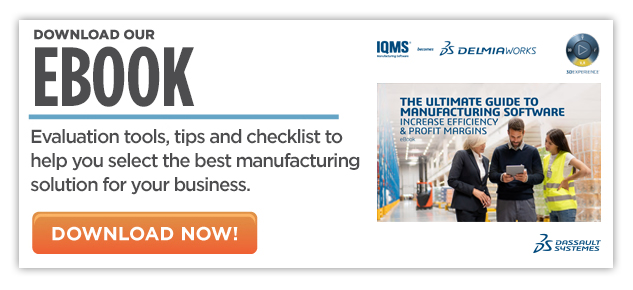IIoT In Manufacturing Update
- Global spending on IIoT Platforms for Manufacturing is predicted to grow from $1.67B in 2018 to $12.44B in 2024, attaining a 40% compound annual growth rate (CAGR) in seven years.
- IIoT platforms are beginning to replace MES and related applications, including production maintenance, quality, and inventory management, which are a mix of Information Technology (IT) and Operations Technology (OT) technologies.
- Connected IoT technologies are enabling a new era of smart, connected products that often expand on the long-proven platforms of everyday products. Capgemini estimates that the size of the connected products market will be $519B to $685B by 2020.
These and many other fascinating insights are from IoT Analytics’ study, IIoT Platforms For Manufacturing 2019 – 2024 (155 pp., PDF, client access reqd). IoT Analytics is a leading provider of market insights for the Internet of Things (IoT), M2M, and Industry 4.0. They specialize in providing insights on IoT markets and companies, focused market reports on specific IoT segments and Go-to-Market services for emerging IoT companies. The study’s methodology includes interviews with twenty of the leading IoT platform providers, executive-level IoT experts, and IIoT end users. For additional details on the methodology, please see pages 136 and 137 of the report. IoT Analytics defines the Industrial loT (lloT) as heavy industries including manufacturing, energy, oil and gas, and agriculture in which industrial assets are connected to the internet.
What You Most Need To Know About IIoT In Manufacturing
The seven things you need to know about IIoT in manufacturing include the following:
- IoT Analytics’ technology architecture of the Internet of Things reflects the proliferation of new products, software and services, and the practical needs manufacturers have for proven integration to make the Industrial Internet of Things (IIoT) work. IoT technology architectures are in their nascent phase, showing signs of potential in solving many of manufacturing’s most challenging problems. IoT Analytics’ technology architecture shown below is designed to scale in response to the diverse development across the industry landscape with a modular, standardized approach.
- IIoT platforms are beginning to replace MES and related applications, including production maintenance, quality, and inventory management, which are a mix of Information Technology (IT) and Operations Technology (OT) technologies. IoT Analytics is seeing IIoT platforms begin to replace existing industrial software systems that had been created to bridge the IT and OT gaps in manufacturing environments. Their research teams are finding that IIoT Platforms are an adjacent technology to these typical industrial software solutions but are now starting to replace some of them in smart connected factory settings. The following graphic explains how IoT Analytics sees the IIoT influence across the broader industrial landscape:
- Global spending on IIoT Platforms for Manufacturing is predicted to grow from $1.67B in 2018 to $12.44B in 2024, attaining a 40% compound annual growth rate (CAGR) in seven years. IoT Analytics is finding that manufacturing is the largest IoT platform industry segment and will continue to be one of the primary growth catalysts of the market through 2024. For purposes of their analysis, IoT Analytics defines manufacturing as standardized production environments including factories, workshops, in addition to custom production worksites such as mines, offshore oil gas, and construction sites. The lloT platforms for manufacturing segment have experienced growth in the traditionally large manufacturing-base countries such as Japan and China. IoT Analytics relies on econometric modeling to create their forecasts.
- In 2018, the industrial loT platforms market for manufacturing had an approximate 60%/40% split for within factories/outside factories respectively. IoT Analytics predicts this split is expected to remain mostly unchanged for 2019 and by 2024 within factories will achieve slight gains by a few percentage points. The within factories type (of lloT Platforms for Manufacturing) is estimated to grow from a $1B market in 2018 to a $1.5B market by 2019 driven by an ever-increasing amount of automation (e.g., robots on the factory floor) being introduced to factory settings for increased efficiencies, while the outside factories type is forecast to grow from $665M in 2018 to become a $960M market by 2019.
- Discrete manufacturing is predicted to be the largest percentage of Industrial IoT platform spending for 2019, growing at a CAGR of 46% from 2018. Discrete manufacturing will outpace batch and process manufacturing, becoming 53% of all IIoT platform spending this year. IoT Analytics sees discrete manufacturers pursuing make-to-stock, make-to-order, and assemble-to-order production strategies that require sophisticated planning, scheduling, and tracking capabilities to improve operations and profitability. The greater the production complexity in discrete manufacturing, the more valuable data becomes. Discrete manufacturing is one of the most data-prolific industries there are, making it an ideal catalyst for IIoT platform’s continual growth.
- Manufacturers are most relying on IIoT platforms for general process optimization (43.1%), general dashboards & visualization (41.1%) and condition monitoring (32.7%). Batch, discrete, and process manufacturers are prioritizing other use cases such as predictive maintenance, asset tracking, and energy management as all three areas make direct contributions to improving shop floor productivity. Discrete manufacturers are always looking to free up extra time in production schedules so that they can offer short-notice production runs to their customers. Combining IIoT platform use cases to uncover process and workflow inefficiencies so more short-notice production runs can be sold is driving Proof of Concepts (PoC) today in North American manufacturing.
- IIoT platform early adopters prioritize security as the most important feature, ahead of scalability and usability. Identity and Access Management, multifactor-factor authentication, consistency of security patch updates, and the ability to scale and protect every threat surface across an IIoT network are high priorities for IIoT platform adopters today. Scale and usability are the second and third priorities. The following graphic compares IIoT platform manufacturers’ most important needs:











